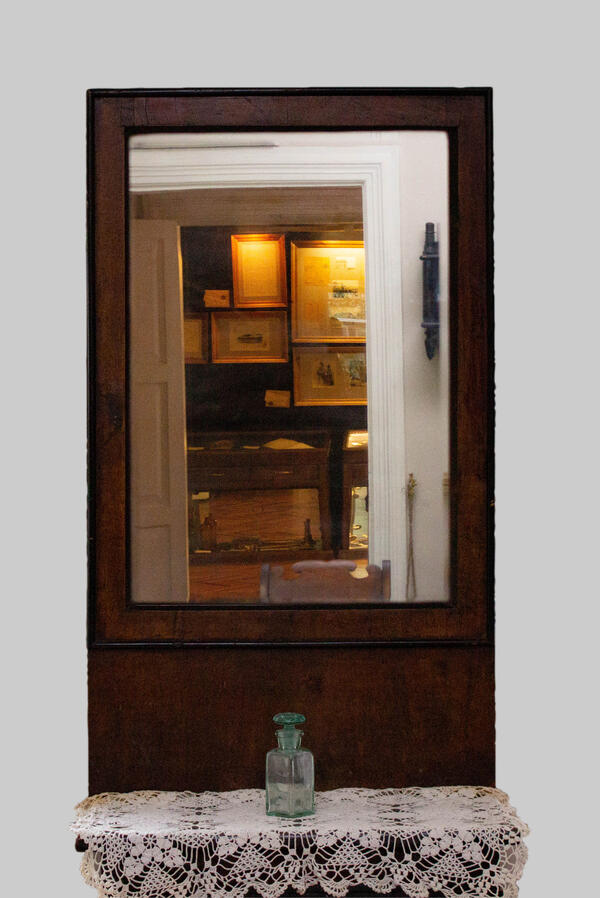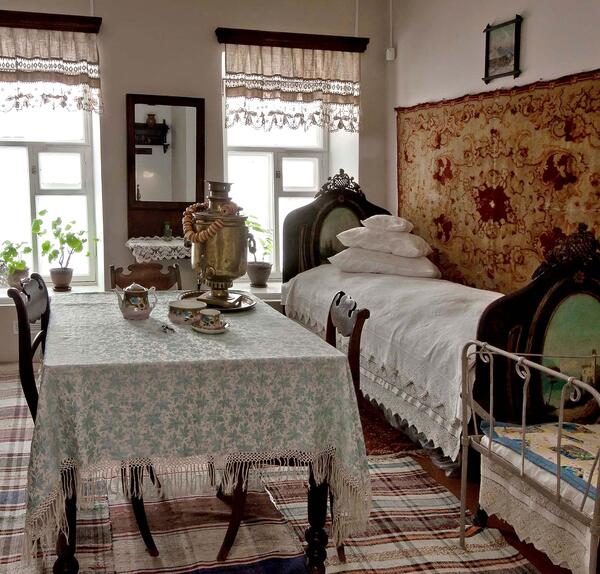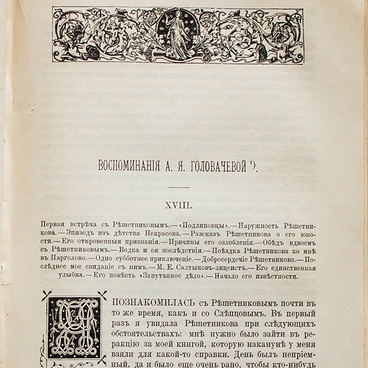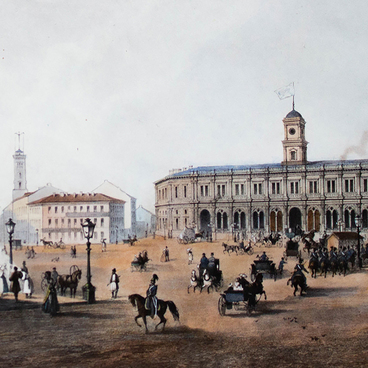There is a large wall mirror in the Postman’s Room. In the works of the 19th-century writer and essayist FyOdor ReshEtnikov, a mirror is an attribute of small-town life. In his story “Kumushka Mironikha, ” the action takes place at the Veretinsky State Mining Plant, where “people live a kind of a semi-urban life.” The village house of Kumushka Mironikha clearly aspires to look urban. The protagonist’s room is not different from a city-dweller’s: in addition to chairs, a painted table and rugs on the floor, it has a “large, but simple mirror”.
Wall-mounted mirror
Creation period
first half of the 20th century
Dimensions
147,5х59х36 cm
Technique
wood, glass, wood carving, turning
Collection
Exhibition
3
Open in app#8
Wall-mounted mirror
#9
#10
Mirror in the Postman’s Room
#11
The mirror’s capacity to “double” reality determines its magical role in traditional cultures. It is usually associated with the other world and is used in funeral rites and fortune-telling, and appears in rituals associated with death. In Russia, until the end of the 17th century, looking at one’s own reflection was considered sinful, and pious people avoided mirrors. The 1666 Church Council forbade the clergy to keep mirrors in their homes.
Mirrors brought to Russia were of small sizes. They were kept in the inner chambers, covered with taffEta or silk, or stored in chests. Mirrors were expensive and were given to young women as dowry. Art critic NatAlya YekImova says, ‘in Russia, mirror frames were made of tin in the form of two-leaved icon cases; both leaves could be opened and closed <…> The entire field framing the mirror was surrounded by bits of glass, usually covered with mica, with floral designs, stylized flowers and birds painted on the back side. The surface of the metal plates was usually given a coat of golden varnish’.
The first mirror manufacturing facility was launched under Peter I. In 18th century Russia, when classicism was gaining foothold, the mirror became an indispensable attribute of the interior. Over time, mirrors got bigger and different types emerged: mirrors with console tables, wall-mounted, and floor mirror, or cheval glass. The frames of antique mirrors were made of wood, porcelain, bronze and tin, which was made to look like silver. Products were usually decorated by hand, embossed with ornaments.
Mirrors brought to Russia were of small sizes. They were kept in the inner chambers, covered with taffEta or silk, or stored in chests. Mirrors were expensive and were given to young women as dowry. Art critic NatAlya YekImova says, ‘in Russia, mirror frames were made of tin in the form of two-leaved icon cases; both leaves could be opened and closed <…> The entire field framing the mirror was surrounded by bits of glass, usually covered with mica, with floral designs, stylized flowers and birds painted on the back side. The surface of the metal plates was usually given a coat of golden varnish’.
The first mirror manufacturing facility was launched under Peter I. In 18th century Russia, when classicism was gaining foothold, the mirror became an indispensable attribute of the interior. Over time, mirrors got bigger and different types emerged: mirrors with console tables, wall-mounted, and floor mirror, or cheval glass. The frames of antique mirrors were made of wood, porcelain, bronze and tin, which was made to look like silver. Products were usually decorated by hand, embossed with ornaments.
#12
The United Museum of the Urals Writers
read morehide
00:00
00:00
1x
Wall-mounted mirror
Creation period
first half of the 20th century
Dimensions
147,5х59х36 cm
Technique
wood, glass, wood carving, turning
Collection
Exhibition
3
Open in app
Share




